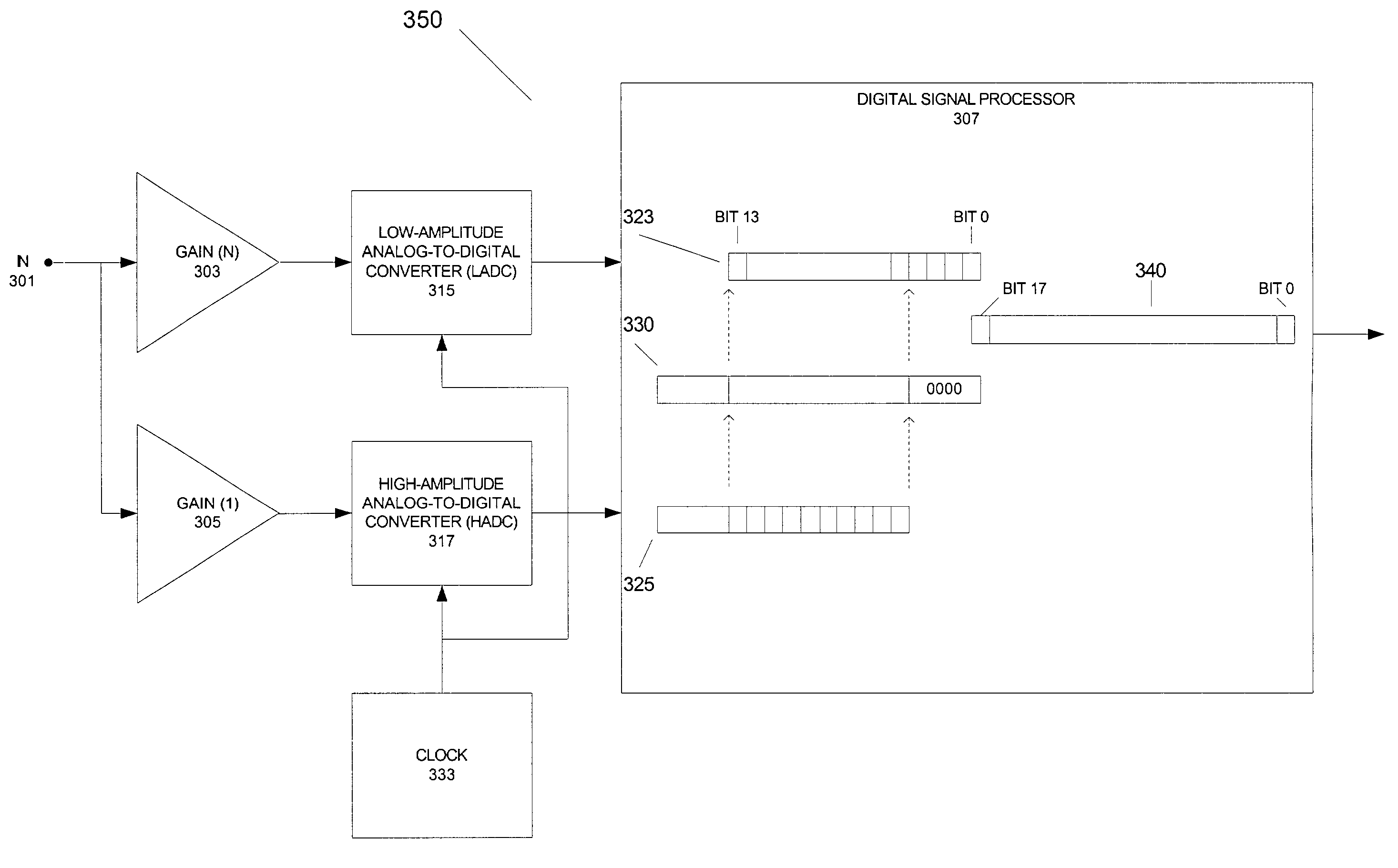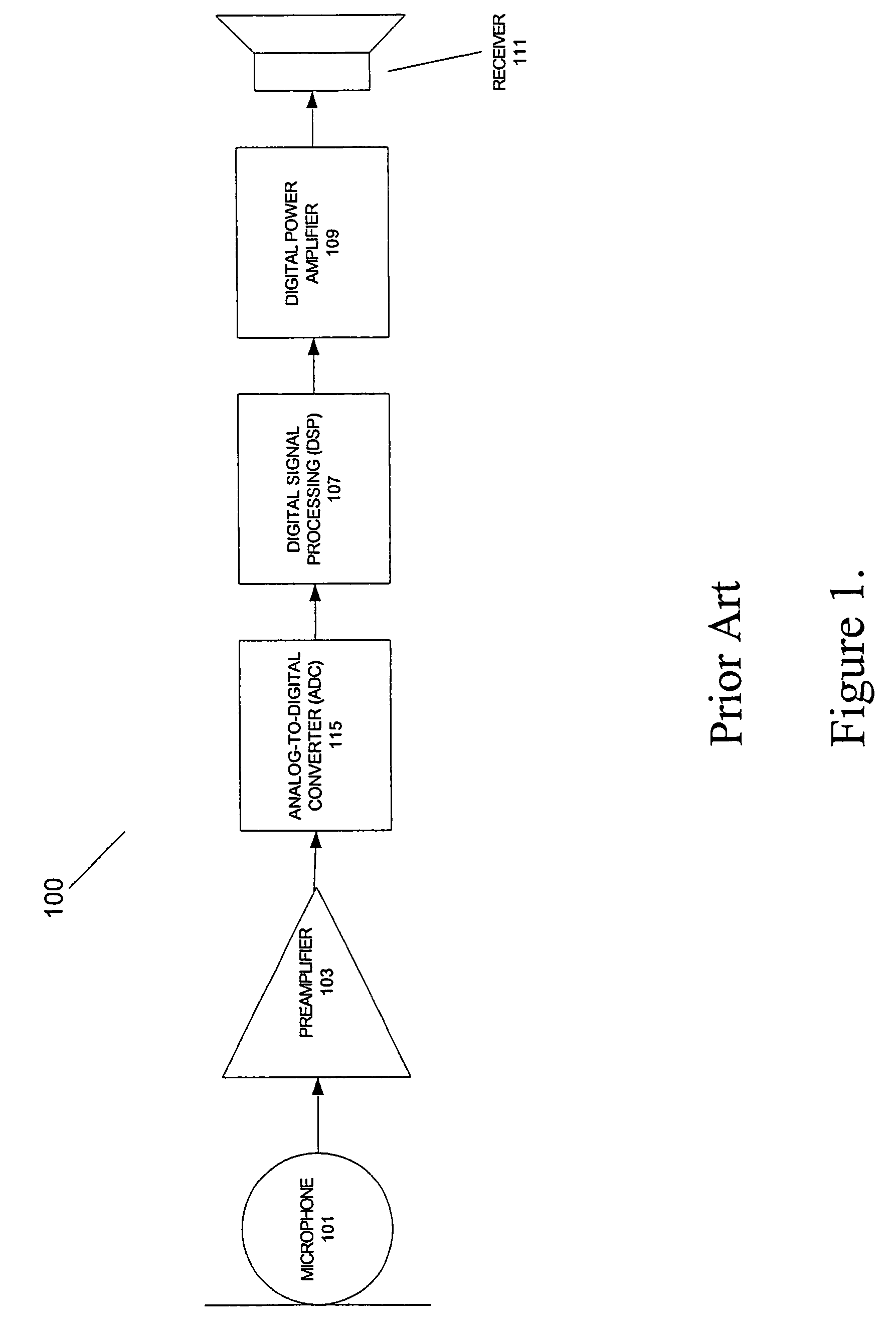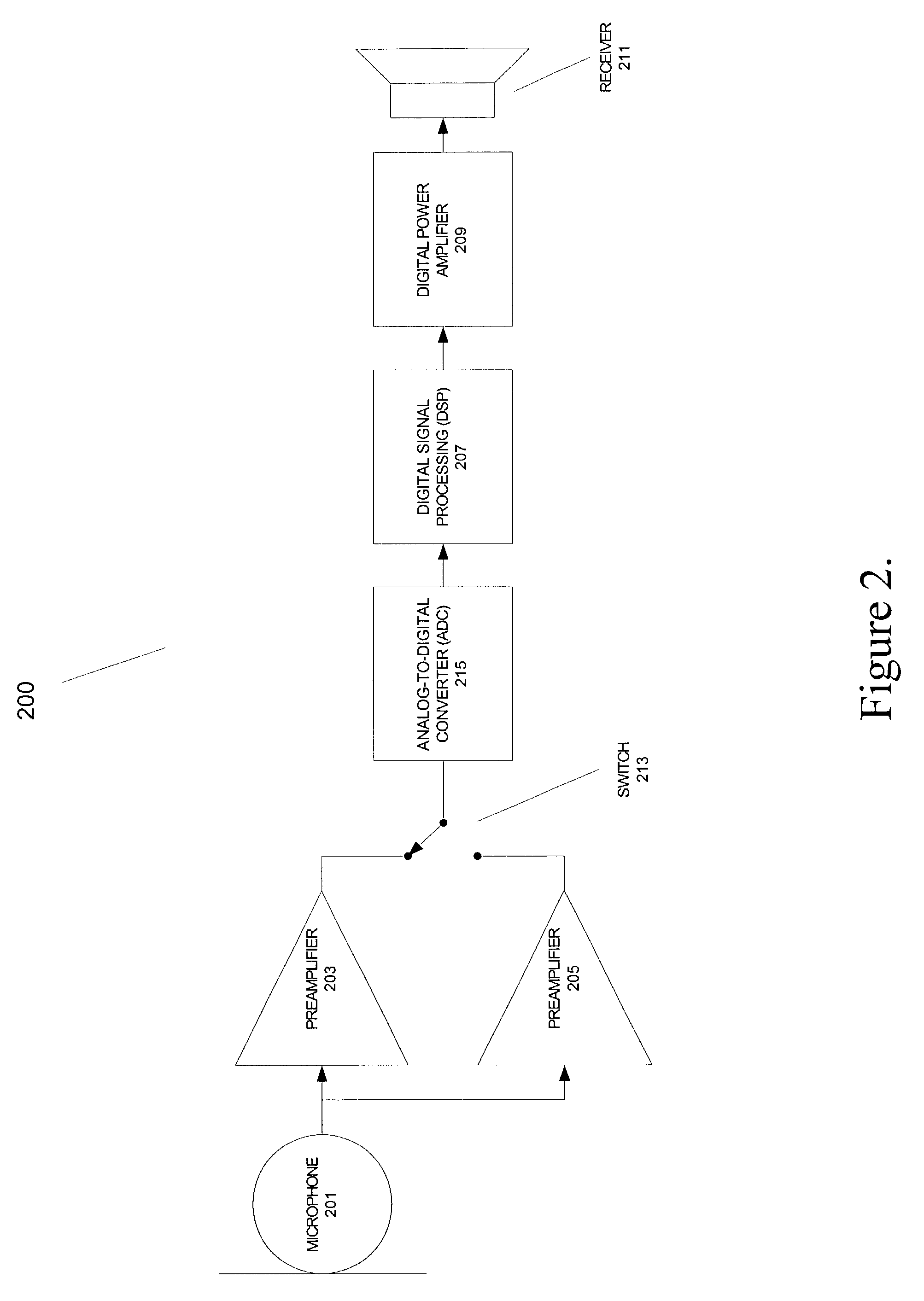Dynamic range analog to digital converter suitable for hearing aid applications
a technology of analog to digital converter and dynamic range, which is applied in the direction of deaf-aid sets, code conversion, electrical equipment, etc., can solve the problems of hearing aids having to be removed, unsuitable for violin playing, and sometimes so bad distortion
- Summary
- Abstract
- Description
- Claims
- Application Information
AI Technical Summary
Benefits of technology
Problems solved by technology
Method used
Image
Examples
Embodiment Construction
[0019]Addressing the problems of the prior art, aspects of the present invention provide a full 16–18 bit (96–108 dB) dynamic range in a digital hearing aid circuit. In one approach, a relatively small and relatively frequency-independent time delay in the A / D operation may be arranged, in which case a delayed switch activation is used to minimize the tick. An all-digital approach, however, is sometimes limited in its tick-free operation by the quantization of the sampling operation. In particular, with a 32 kHz effective sampling frequency, the smallest change is 31.25 μsec. In listening tests, a delay error as small as 3.2 μs can be detected as a small click with some program materials. In carefully contrived listening tests, some listeners can detect errors as small as 1.4 μsec.
[0020]In another approach, an even better performance is obtained with the use of two identical analog-to-digital converters (ADCs) operating from a single clock. One of the two ADC inputs may be preceded ...
PUM
 Login to View More
Login to View More Abstract
Description
Claims
Application Information
 Login to View More
Login to View More - R&D
- Intellectual Property
- Life Sciences
- Materials
- Tech Scout
- Unparalleled Data Quality
- Higher Quality Content
- 60% Fewer Hallucinations
Browse by: Latest US Patents, China's latest patents, Technical Efficacy Thesaurus, Application Domain, Technology Topic, Popular Technical Reports.
© 2025 PatSnap. All rights reserved.Legal|Privacy policy|Modern Slavery Act Transparency Statement|Sitemap|About US| Contact US: help@patsnap.com



